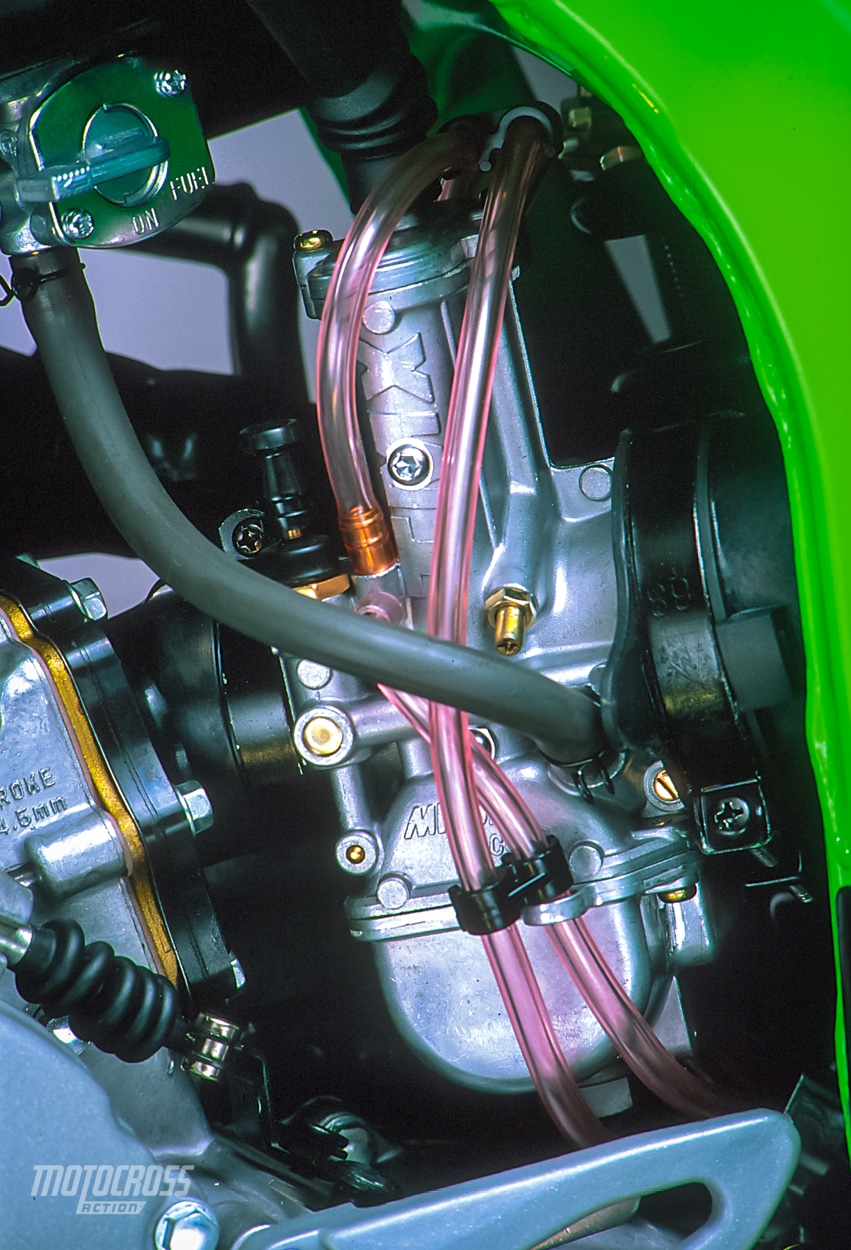ASK THE MXPERTS: PILOT TO CO-PILOT, “IS THE JET RUNNING RIGHT?”
 Jetting? No problem if you buy a bike that is properly jetted on the showroom floor — and never leave that spot.
Jetting? No problem if you buy a bike that is properly jetted on the showroom floor — and never leave that spot.
PILOT TO CO-PILOT COMMUNICATIONS
Dear MXA,
After five years of riding my 2013 Honda CRF450, I decided to join the two-stroke revolution, and I bought a really nice used 2015 Yamaha YZ250 two-stroke. I shopped around because I couldn’t believe the prices that old roached-out YZ250s were selling for. Finally, I found the perfect deal on a stock bike that had only been ridden by a little old lady from Pasadena. Actually, it belonged to a guy who needed money to pay his tuition. Never having ridden a two-stroke before, I took it out to the local track and it ran great, but it blubbered down low and didn’t pick up very cleanly. What do I need to do to get it to run better down low?
The jet circuit that controls the power off idle is the pilot jet. If the pilot is wrong, the bike can run rough, bog or even sputter. Luckily, it is quite easy to deal with. When a two-stroke carburetor’s slide is closed to a quarter throttle or less, it doesn’t atomize fuel effectively. There isn’t enough air velocity to draw fuel through the main jet. For these quarter-throttle-or-less settings, the carburetor uses the pilot bypass circuit to get fuel to the engine. This bypass channels air into the pilot circuit (where it mixes with gasoline). This controls how a bike runs from idle to the midrange. It is controlled by the size of the pilot and a tapered needle called the “air screw.”
The air screw opens or closes an orifice that allows air to get to the pilot jet circuit. It’s adjusted by a screwdriver, thus the screw nomenclature. Don’t confuse the air screw on a two-stroke carburetor with the fuel screw on a four-stroke carb. They are completely different, not only in function but in location (an air screw is located on the left side of the carburetor and a fuel screw is positioned under the carburetor). Air screws meter air; four-stroke fuel screws meter fuel. Simple.
Air can be metered two ways on a two-stroke:
(1) Air screw. The externally adjustable air screw controls the amount of air that is fed into the pilot circuit. It is adjusted by turning it with a screwdriver. The air screw meters air before it reaches the pilot circuit. If you turn the screw in (clockwise), it reduces the amount of air that mixes with the fuel that the engine sucks through the pilot jet. Thus, turning it in richens the mixture. Turning the air screw out lets more air in and leans the pilot circuit.
(2) Pilot jet. The pilot jet meters how much fuel is mixed with the air that is being drawn through the pilot circuit.
You may need a different pilot, but most Yamaha YZ250s come fairly well-jetted if they are still in stock condition, so your first focus should be on the air screw. Here is how you adjust the air screw on your 2015 Yamaha YZ250.
(1) With a warm engine, bring the bike up to a steady throttle setting (approximately 1800 rpm). Get a friend to hold the throttle perfectly still or use the slide stop to set it at a fast idle.
(2) Once the engine is running at a fast idle, turn the air screw in (clockwise) until engine rpm drops. Turn it in to the point where the engine is about to die. Then, slowly turn the air screw out until engine rpm picks up.
(3) Stop turning the air screw once the rpm reaches its peak speed. Peak rpm is when the engine runs the cleanest and fastest. When you reach the point where the idle doesn’t increase in rpm anymore, stop turning the air screw.
(4) Don’t worry if you have to turn the air screw in and out several times to find peak rpm. Once you have found peak rpm, turn the air screw back in and count the number of turns it takes for the screw to reach its stop. Air screws are adjusted by the number of turns out. Memorize the number of turns. Now turn your air screw back out to the setting that you discovered to be the best.
(5) The air screw is an auxiliary to the pilot jet and can be used to indicate whether the pilot jet is too lean or too rich. The typical air screw adjustment is from 1/2 turn to 2-1/2 turns out. If the air screw has to be turned out more than 3 turns, it is a warning that you should switch to the next leanest pilot jet (from a 32.5 to a 30, for example). If the engine has peaked before turning the air screw a half turn out, switch to the next largest pilot jet.




Comments are closed.